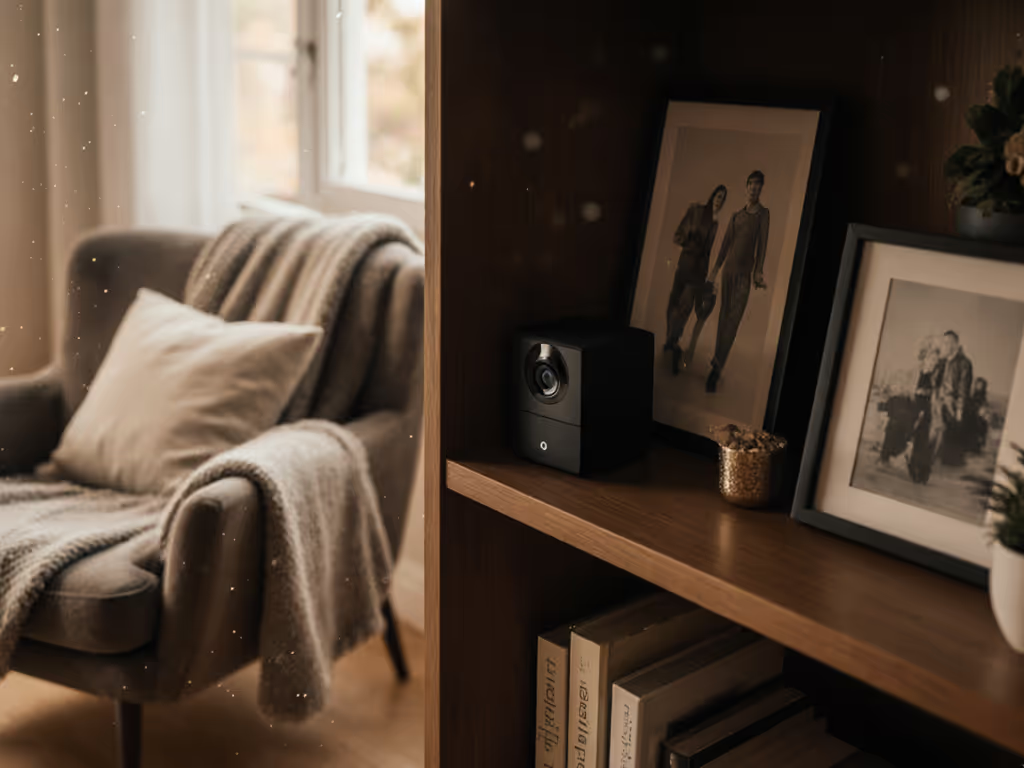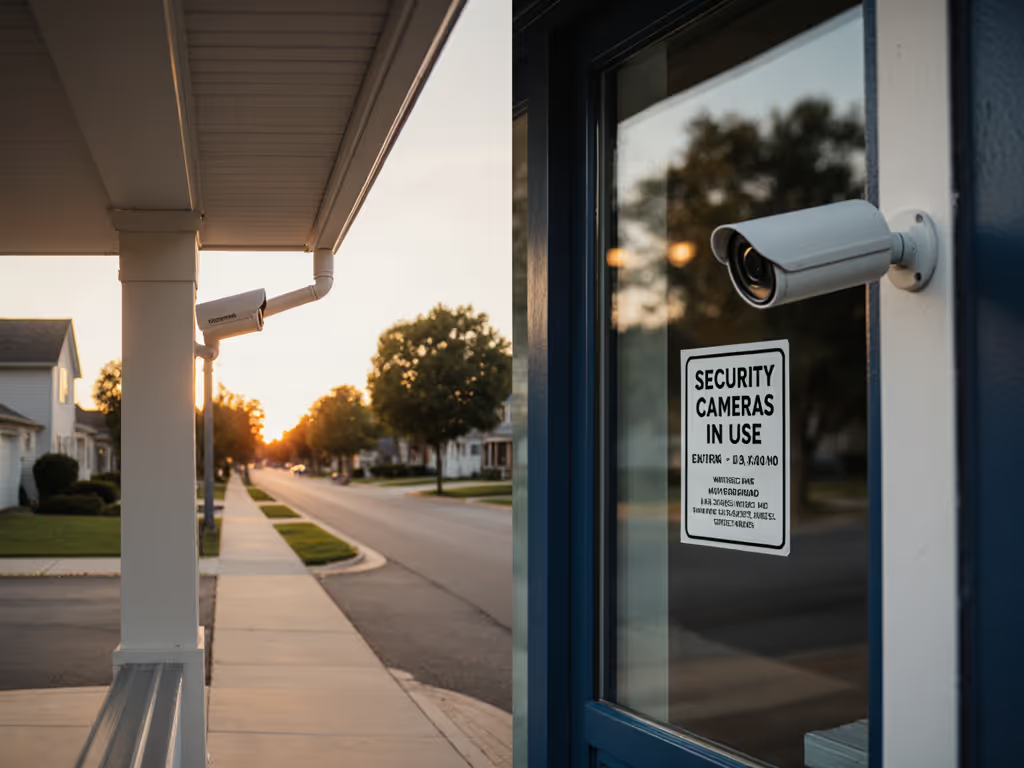
How to Submit Security Footage Police Will Actually Use

That midnight hit-and-run case years ago hinged on a single frame. Not because it had high-tech filters or AI tags, but because the neighbor's footage offered security camera evidence documentation that met evidentiary thresholds: balanced exposure, consistent timestamps, and clean audio. Police called it "boring, in the best way." Too many homeowners and small-business owners waste time capturing video police can't use due to avoidable errors in police incident reporting. This isn't about fancy gadgets, it is about delivering footage that holds up when minutes matter. Here is how to ensure your recordings become evidence, not just video.
Why Most Footage Gets Rejected
Police consistently reject submissions for three objective failure notes:
- Missing Context: Clips starting after the incident or lacking timestamps. One homeowner captured a package thief but omitted the 30 seconds showing the suspect casing the porch. If porch theft is your main concern, compare package theft detection cameras optimized for capturing pre-roll context and clear identifiers. Without this sequence, the footage couldn't establish intent.
- Technical Flaws: Motion blur from inadequate shutter speed, inconsistent frame rates, or corrupted exports. A recent study by the International Association of Chiefs of Police found 68% of rejected footage suffered from motion artifacts that obscured identifiers.
- Chain Breaks: Unverified timestamps or unsecured storage paths. If your NVR's clock drifted 12 minutes during an outage, the timeline collapses.

The 5-Step Submission Checklist
Follow this evidence framing protocol. It is proven in disputes from porch pirates to vandalism, and it ignores marketing fluff entirely.
1. Verify Timestamps Against Atomic Clocks (Not Just Your Router)
Clear thresholds matter: Police require ±2-second accuracy against Coordinated Universal Time (UTC). Most consumer systems sync to local routers vulnerable to outages or drift.
- Do this: Enable NTP (Network Time Protocol) on your NVR/camera and sync to a reliable public atomic time server. Test monthly by comparing footage timestamps to a trusted time source on a smartphone.
- Why it works: In a recent California shoplifting case, footage was dismissed because the system clock jumped 17 minutes during a power cycle. Atomic sync prevents this.
- Avoid: Relying on cloud services alone (outages create gaps). Local storage + NTP is non-negotiable for audit-ready evidence. Not sure which approach fits your setup? See our cloud vs local storage comparison for reliability and outage scenarios.
2. Capture Full Motion Sequences (Not Just "Alerts")
Motion-activated clips often miss critical context. Police need the entire incident sequence:
- Pre-roll: 15 seconds before motion triggers (standard with quality NVRs)
- Event duration: Continuous recording during the incident
- Post-roll: 10 seconds after motion ends
Incident documentation checklist for each submission:
- Pre-roll footage visible
- Timestamp watermark overlaid on video (not just filename)
- No gaps between events
- Audio track included (if captured) Before recording audio, review your state's consent rules in our state security camera laws guide.
This sequence helped solve a Virginia burglary. The thief's accomplice was visible only in the 12 seconds before the main event, a detail lost in standard "alert clips."
3. Export in Standard Formats (No Proprietary Lock-ins)
Evidentiary standards for security footage mandate universally playable files. Police won't convert codecs or chase subscription links.
- Use:
.mp4(H.264) or.movwith AAC audio - Never:
.dav,.smil, or cloud-only links - Critical: Embed metadata in the file (not just email descriptions). Tools like FFmpeg add timestamps directly to the video stream.
A Seattle hit-and-run case stalled because footage required a vendor-specific player. When the company discontinued support, the evidence became unusable. Stick to open formats.
4. Document the Chain of Custody Yourself
Chain of custody procedures start before police arrive. Create a verifiable trail:
| Step | Action | Proof |
|---|---|---|
| 1 | Original capture | NVR system logs showing uninterrupted recording |
| 2 | Export method | Screenshot of export settings (format, time range) |
| 3 | File transfer | Email timestamp or notarized handoff receipt |
Note: You're not a forensic expert, just establish a clear handoff path. As one detective told me: "We don't need a lawyer's affidavit; we need to know who touched the file and when."
5. Prioritize Identification Clarity Over Resolution Hype
4K is useless if motion blur hides faces. Police evidence submission process prioritizes practical ID:
- Frame rate: 15+ FPS for moving subjects (25+ FPS for vehicles)
- Shutter speed: 1/100+ sec minimum in daylight; 1/30+ sec at night
- Lighting: Avoid IR reflection (position cameras >12ft from walls) and use warm white LEDs for color retention
In a New York case, 1080p footage at 30 FPS captured a license plate police confirmed as usable. The adjacent 4K clip? Unusable due to motion smearing at 8 FPS in low light. Clarity beats specs. For real-world examples of what each resolution can identify, see our 1080p vs 4K practical guide.
The Final Verdict
Usable evidence isn't about the camera, it is about disciplined documentation. That hit-and-run case succeeded because the footage was boring: consistently exposed, timestamp-accurate, and exported simply. Police don't need flashy features; they need footage that answers three questions without guesswork: Who? When? What? Follow these steps, and your recordings will clear evidentiary thresholds every time. Because when seconds count, clarity plus context turns video into evidence that matters most. Boring, in the best way.

